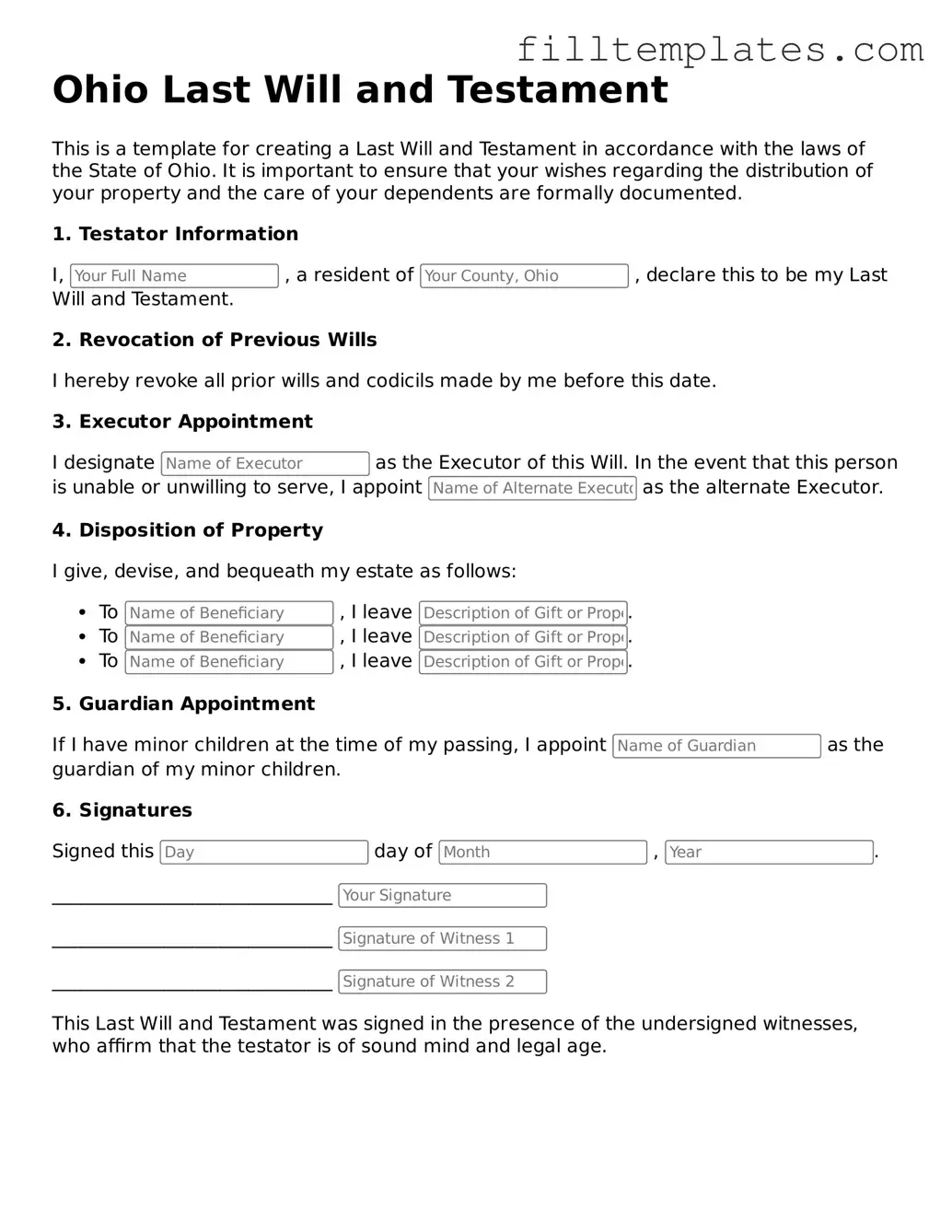Official Last Will and Testament Template for the State of Ohio
A Last Will and Testament form in Ohio is a legal document that outlines how a person's assets and affairs should be handled after their death. This form allows individuals to express their wishes regarding the distribution of their property, guardianship of dependents, and other important matters. Having a valid will ensures that your intentions are honored and can help avoid disputes among family members.
Open Last Will and Testament Editor
